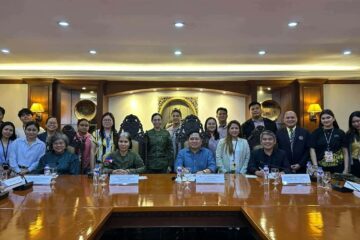
THE MEMORANDUM requiring higher education institutions (HEIs) to hold at least half of their classes onsite in the second term of this academic year is being reviewed to take into account the feedback of stakeholders, the Commission of Higher Education (CHED) said.
Under CHED Memorandum No. 16, HEIs opting to deliver hybrid learning should spend 50% of their contact time at a physical learning facility. On-the-job trainings, apprenticeship programs and laboratory classes were also required to be held face-to-face. HEIs are prohibited from implementing a full online modality unless authorized by the Commission.
“The percentage as to the modality of teaching, whether it’s online or face-to-face…still [has] some portions that need to be finalized…especially with regard to the 50:50 area or ratio of modality of learning,” CHED executive director and lawyer Cinderella Benitez-Jaro told The Flame.
The Coordinating Council of Private Educational Association of the Philippines has urged CHED to defer the implementation of the changes to the next academic year to give ample time for the schools to adjust.
Jaro said CHED had gathered feedback from stakeholders with regard to the mode of instruction for the second term. The Commission thought it was best to take a look at some provisions before officially issuing the implementing guidelines of the memorandum, she added.
While some universities still implement online classes as their primary learning mode, Benitez-Jaro assured the public that CHED’s order was issued under the guidance of health experts.
“Higher education institutions should be ready. They should have a plan [of] what to do before they open their classes, and then what to do in case they are already implementing or offering their programs and what to do in case there will be infection,” Jaro said.
“Conduct a self-assessment. We have directed HEIs to conduct this, take a look at your capability, facilities, students, how many and how large (the facilities are), and how students can be protected. One of our concerns and priorities are the health and safety of our students,” she added.
HEIs are given the option to deliver their degree programs through onsite learning or hybrid learning modality starting the second semester of this year.
UST Vice-Rector for Academic Affairs Prof. Cheryl Peralta previously told The Flame the onsite-online class ratio would be determined by the academic units.
“Academic units shall engage their academic staff in determining this combination and arranging the schedule of classes moving forward,” Peralta said.
Under the Faculty of Arts and Letters’ general guidelines for the second term of Academic Year 2022-2023, synchronous classes for general education courses will still be conducted online. However, the pilot of onsite classes for general education courses will be implemented this term.
The guidelines also state that the lecture and laboratory classes in professional courses may implement an online or hybrid modality, depending on the academic unit. High-stakes assessments of all courses will be held onsite. F – Z.A Aguinaldo and A.J. Galang with reports from Dawn Solano, Aubrey Shane Lim and Prince Ronson Sabado



